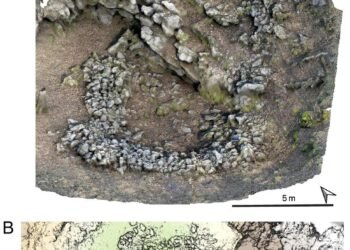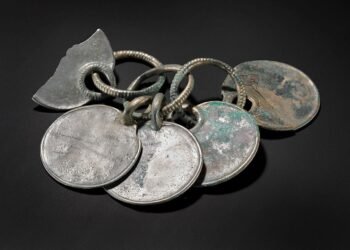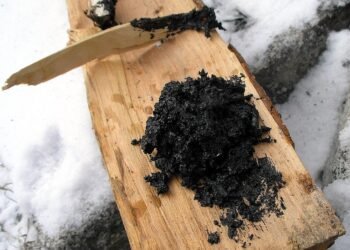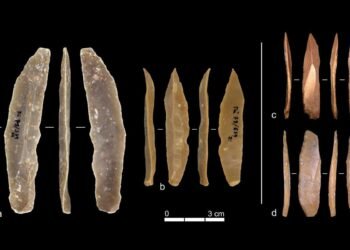Archaeologists have unearthed over 100 fragments of a large votive monument from the Roman period at the Roman Open-Air Museum in Hechingen-Stein, southwestern Germany.

These fragments, discovered during ongoing excavations by the State Office for Monument Preservation (LAD) within the Stuttgart Regional Council, along with the Association for the Promotion of the Roman Open-Air Museum, feature intricate reliefs depicting Roman gods and mythological scenes.
The votive monument, likely dating back to the 2nd or 3rd century CE, originally consisted of multiple stacked stone blocks adorned with reliefs on all sides, according to Dr. Klaus Kortüm from LAD. “The blocks are decorated with reliefs on all sides, showing ancient gods and figures from the associated legends,” Kortüm stated in an interview. He added that after the Roman era, the monument was dismantled and its pieces scattered, leaving only fragments recognizable through comparison with similar finds.

This votive structure is not only unique in size compared to others discovered in the Rhine and Danube Roman border provinces but also holds historical significance for the understanding of Roman religious practices in the region. The Hechingen-Stein complex itself, a well-preserved example of a villa rustica, stands out among over 1,500 Roman farmhouses found in the Baden-Württemberg area due to its size and architectural complexity. It includes a main residence, bathhouses, a temple, and encircling walls, elements that suggest it may not have served a purely agricultural purpose.
The villa complex was first discovered in 1973 by Gerd Schollian, then-mayor of Stein, with initial excavations starting in 1978 under the Tübingen branch of the monument office. Since 1992, annual excavations have continued, gradually revealing more of the villa’s layout and infrastructure. This continuity has helped preserve the villa’s structural integrity, as the site was not built upon or damaged after it was abandoned, likely during a planned Roman withdrawal around 260 CE.
Archaeologists have turned to advanced technology to reconstruct the votive monument. They are creating scaled-down replicas of the fragments using 3D printing, which will be pieced together to form a model of the monument. This replica, along with the original fragments, is slated to be displayed at the Hechingen-Stein museum.

The discovery raises intriguing questions regarding the monument’s origin and the person who commissioned it. Votive monuments often included inscriptions that identified the dedicator, the specific gods being honored, and the occasion for its construction. The excavation team hopes that more blocks of the monument will surface, as they continue to investigate this unique villa complex.
State Office for Monument Preservation in the Stuttgart Regional Council






















